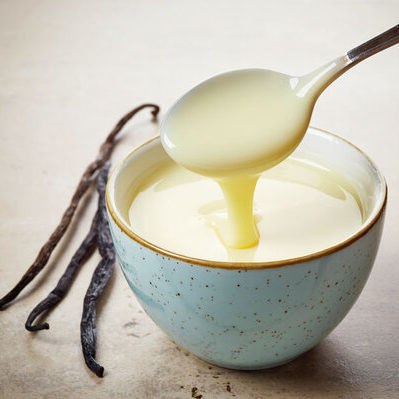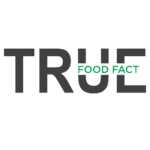
Vanilla
What is Vanilla?
Vanilla is a long, thin, and dark brown bean, which is the fruit of an orchid plant. This spice is well-known for its intense aroma and flavor. It is commonly used to flavor anything from desserts to beverages.
- In 2018, the global market value for vanilla reached $510 million.
- It is expected to continue growing at a rate of 4.7%. Vanilla is the most expensive spice in the world, after saffron.
Some common ways to use this food in the kitchen include:
- Ice creams
- Syrups
- Cakes
- Frosting
- Desserts
- Beverages
- Liquors
Origin of vanilla
It has its origin in Mexico in the 15th century, where the Totonacs were the first tribe to cultivate these pods. They used it for religious and medicinal purposes, believing it was a gift from the gods. Later on, the Aztecs conquered the Totonacs and began to explore this food’s edible properties. Then, Spanish explorers landed in this region and took advantage of the plant, leading to its spread all over Europe. It arrived in the United States in the 1800s and from then onward, it started to appear in cookbooks and soft drinks.
Nutrition
In a serving size of 100g, there are:
- 288 calories
- 0.1g of fat
- 13g of carbohydrates
- 0.1g of protein
Here are a few health benefits of this food:
- It is good for the heart because it can reduce cholesterol levels.
- This food can promote the healthy functioning of the digestive system.
- It can assist with weight loss and efficient body metabolism.
- It is rich in antioxidants, which are good for the breakdown of cells and tissues in the body.
This spice is generally considered safe if consumed in the moderate amounts found in food. However, skin contact with it could cause irritation and swelling in some individuals.
Commercial production
The following conditions are ideal for the commercial cultivation of this crop.
- Warm climate with regular rainfall
- Annual rainfall: 59-118 inches
- Soil type: sandy loam, laterites
Farmers cultivate this crop with shoot cuttings, although the length of these cuttings might be adjusted depending on the planting area available. During land preparation for this crop, care is taken to ensure that each plant or vine has support, which is necessary for growth. Other activities like mulching, training, and flowering are also carried out to keep the crop in good shape. Immature beans usually have a dark green color. A yellow color signifies that the crop is ripe for harvesting.
As for the extract’s preparation, the beans are ground into small pieces to expose the seeds in the pod. Next, the ground beans are washed and soaked in a mixture of water and alcohol. This process releases the flavor from the beans to the alcohol.
Application
The best place to store this food is a cool, dry, and dark place in an airtight container. However, you shouldn’t refrigerate it, as this can cause mold growth. Every few weeks, you should open the airtight container for 15 minutes to help air out the beans. When these beans are under the best conditions, they can dry out with time. Use the beans within a maximum of six months, although they can last for up to two years if stored properly.
When you buy these beans, choose those that are moist, plump, and flexible. Stay away from the dry and brittle ones.
Vanilla recipes
This can be used in a variety of sweet dishes and beverages. Here are some popular recipes:
FDA regulation
The FDA has a standard of identity for vanilla beans and defines them as the properly cured and dried fruit pods of the specified species. The organization also has a standard of identity for vanilla extract. They go on to stipulate that five to six vanilla beans can be used to make 1 cup (8 ounces) of vanilla extract. The extract is defined as the solution of aqueous ethyl alcohol of the sapid and odorous principles taken from the beans. The FDA oversees the preparation, processing, and labeling of this extract as a food flavor.
References
“Global Vanilla Market Will Reach Over USD 735 Million By 2026: Zion Market Research.” Globe News Wire, Zion Market Research, 11 July 2019, www.globenewswire.com/news-release/2019/07/11/1881426/0/en/Global-Vanilla-Market-Will-Reach-Over-USD-735-Million-By-2026-Zion-Market-Research.html.
Thompson, Chloe. “Vanilla: 8 Fun Facts.” WebMD, WebMD, 14 Aug. 2014, www.webmd.com/food-recipes/features/vanilla-8-facts.
Ball, Lizzie. “8 Surprising Health Benefits of Vanilla.” Crystalspring.co.uk, The Crystal Spring blog, 22 Aug. 2018, crystalspring.co.uk/blogs/under-our-skin/8-surprising-health-benefits-of-vanilla.
Lee, Vivien. “The Secretly Insane Story of Vanilla.” thrillist.com, Thrillist blog, 18 Sept. 2017, www.thrillist.com/culture/history-of-vanilla-the-secretly-insane-origin-of-vanilla.
“CFR – Code of Federal Regulations Title 21.” accessdata.fda.gov, U.S. Food & Drug Administration, 1 Apr. 2019, www.accessdata.fda.gov/scripts/cdrh/cfdocs/cfcfr/CFRSearch.cfm?fr=169.3.
